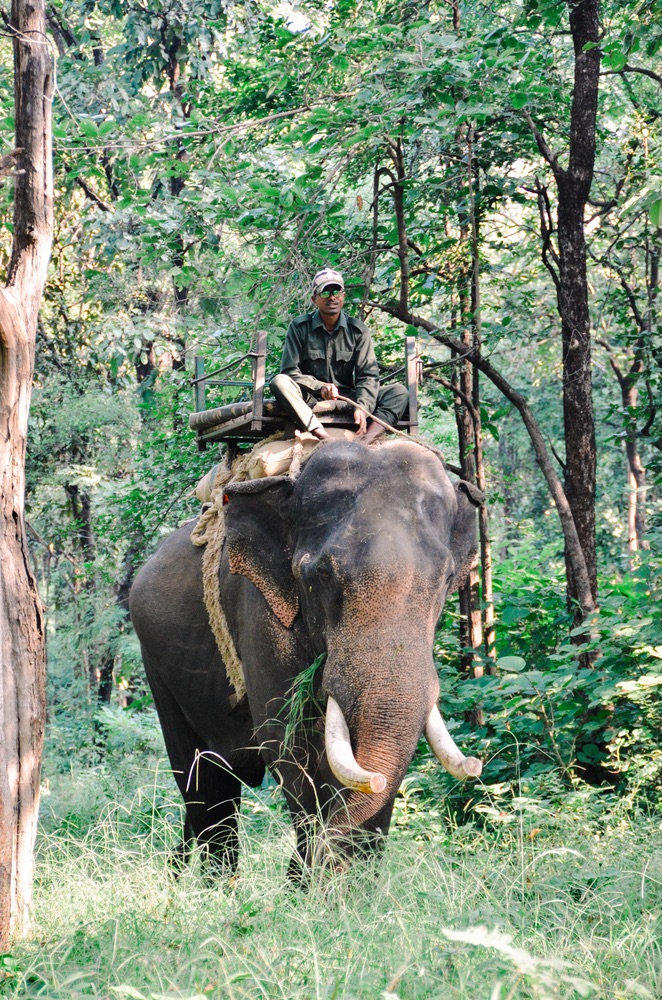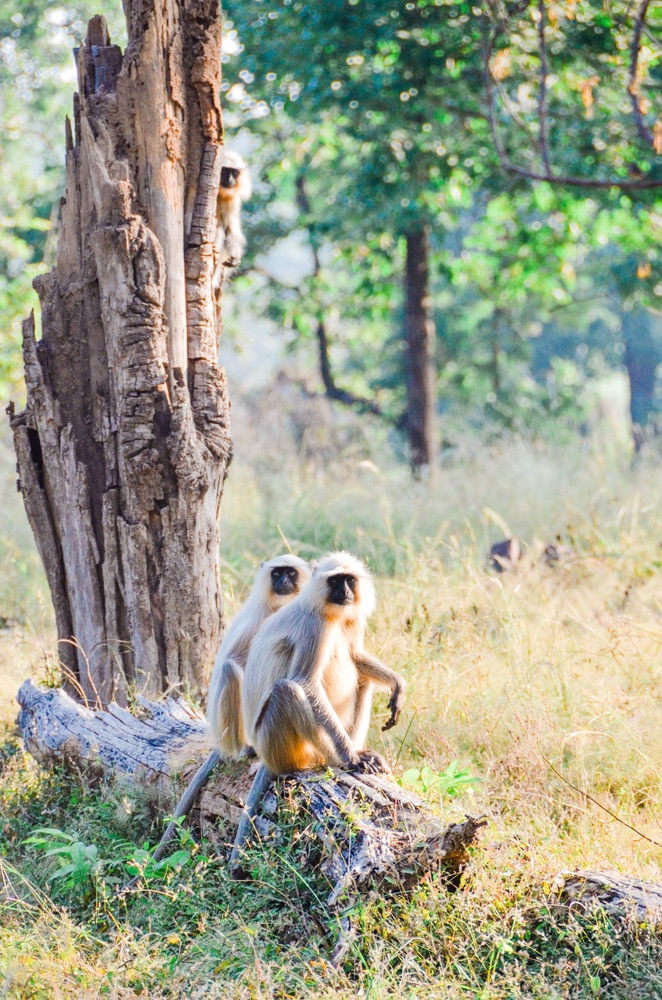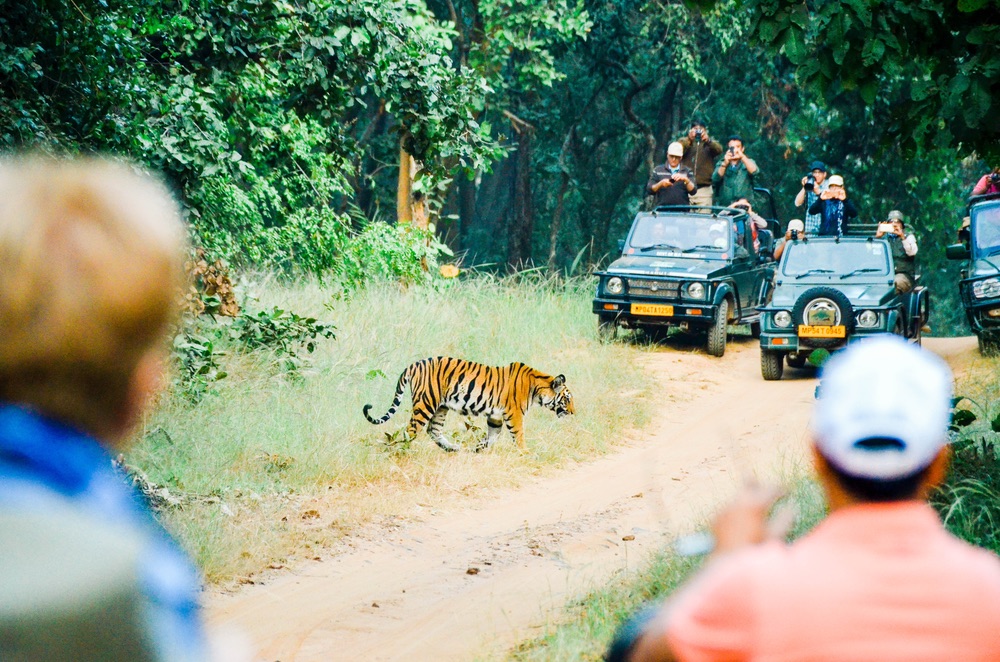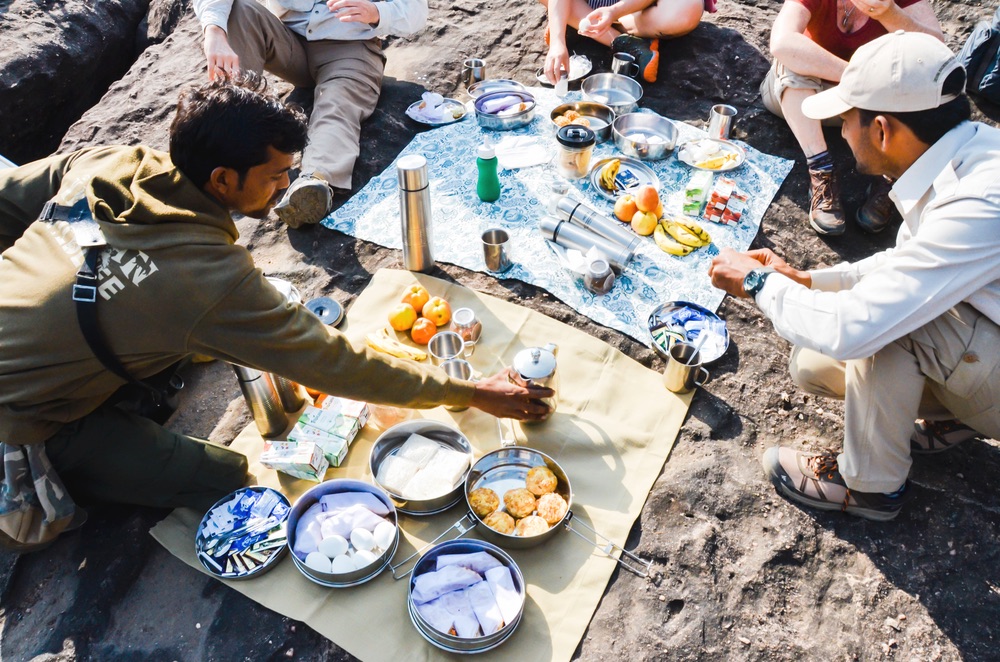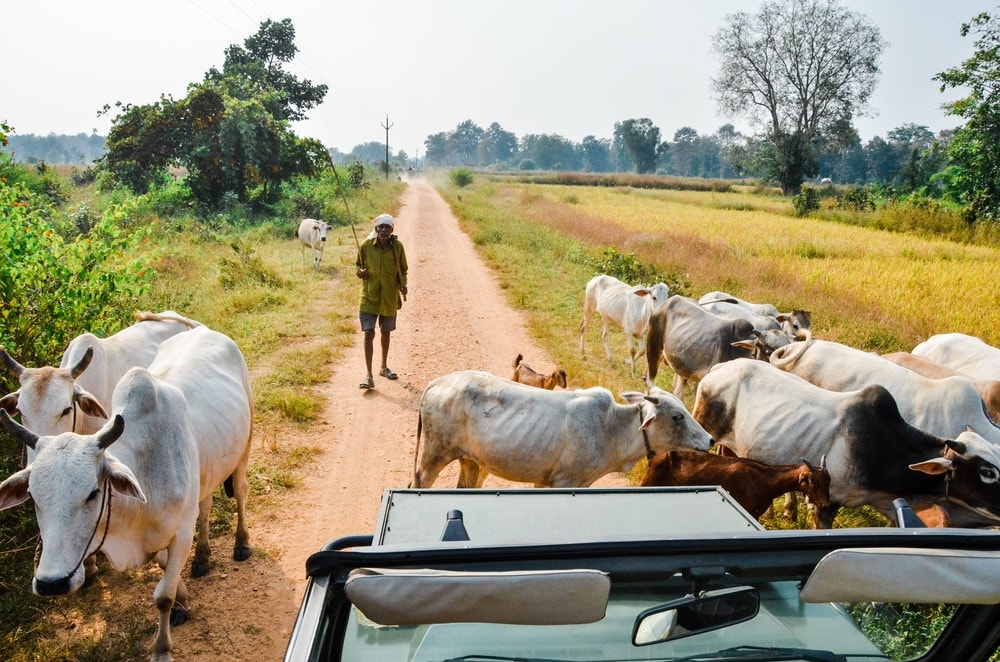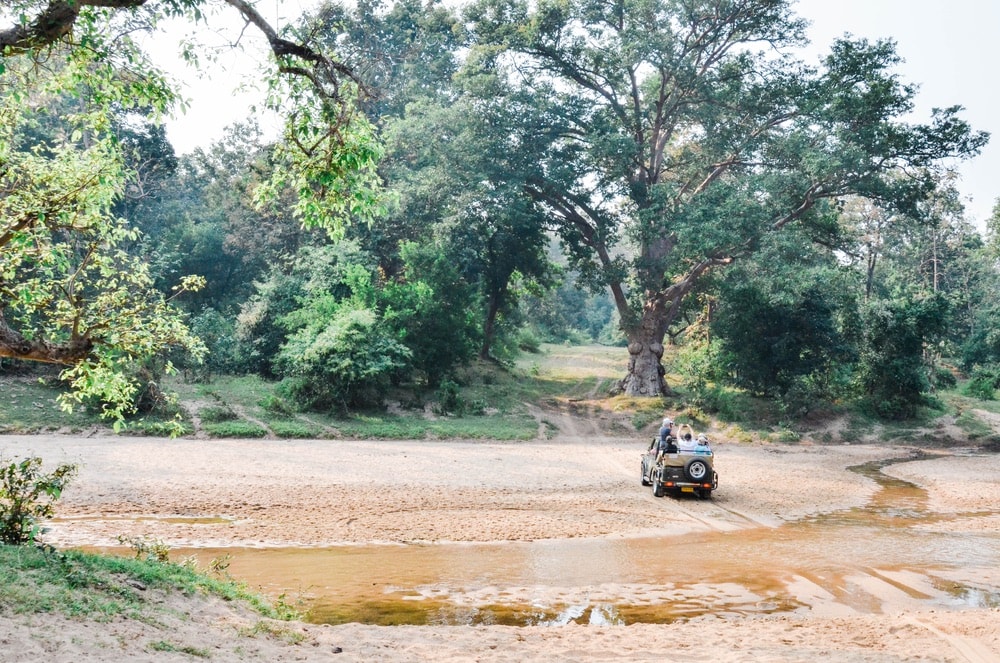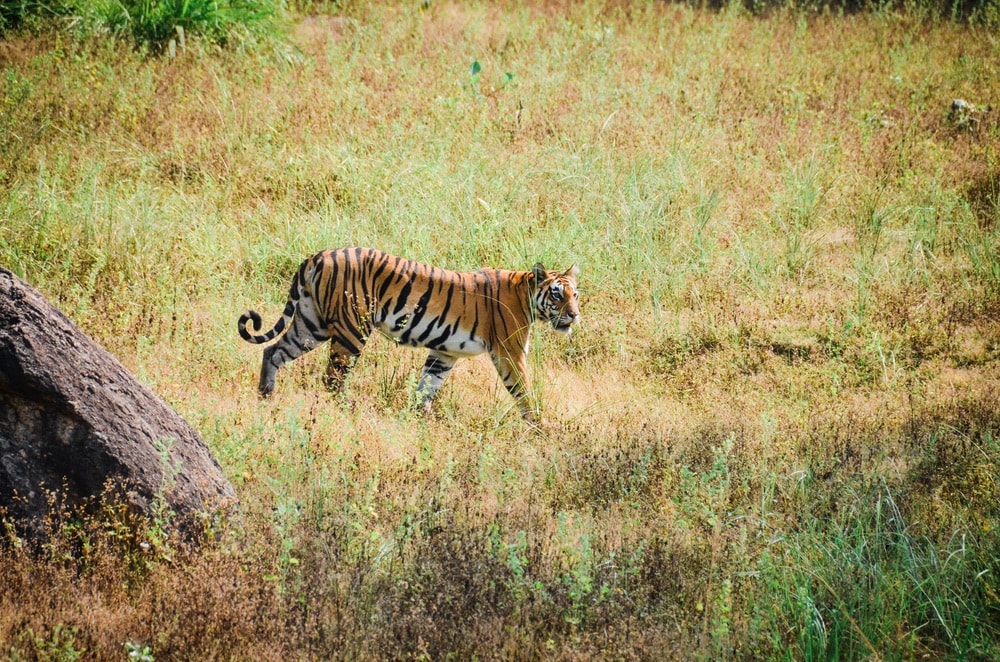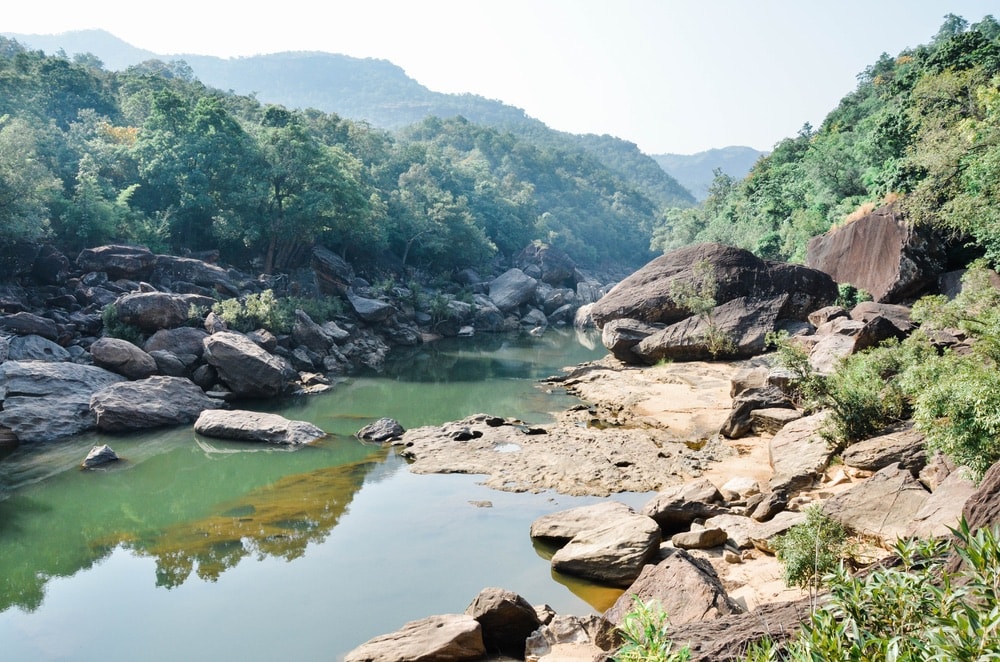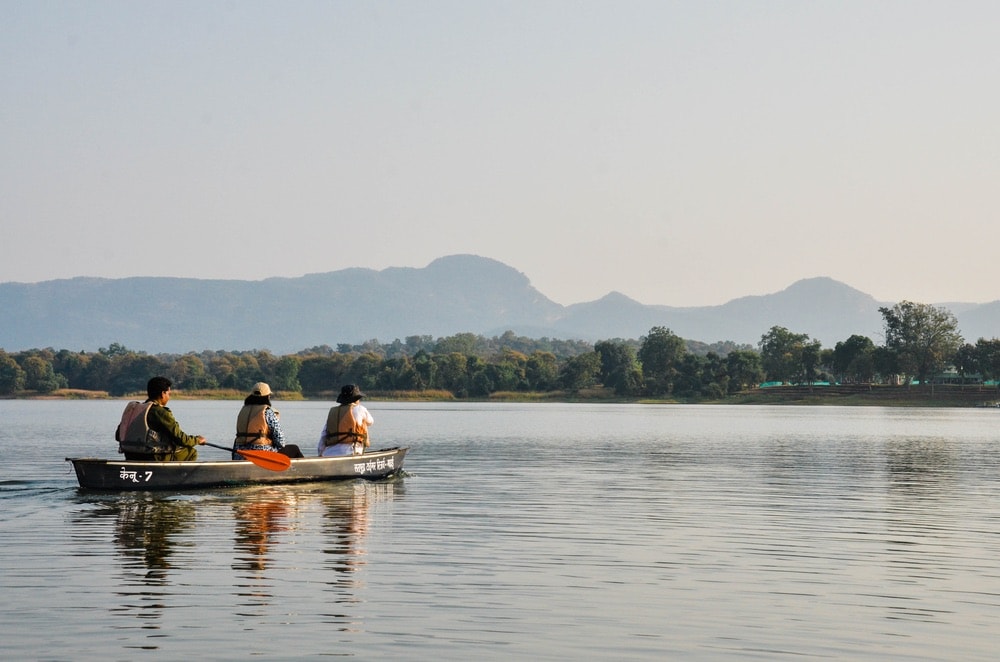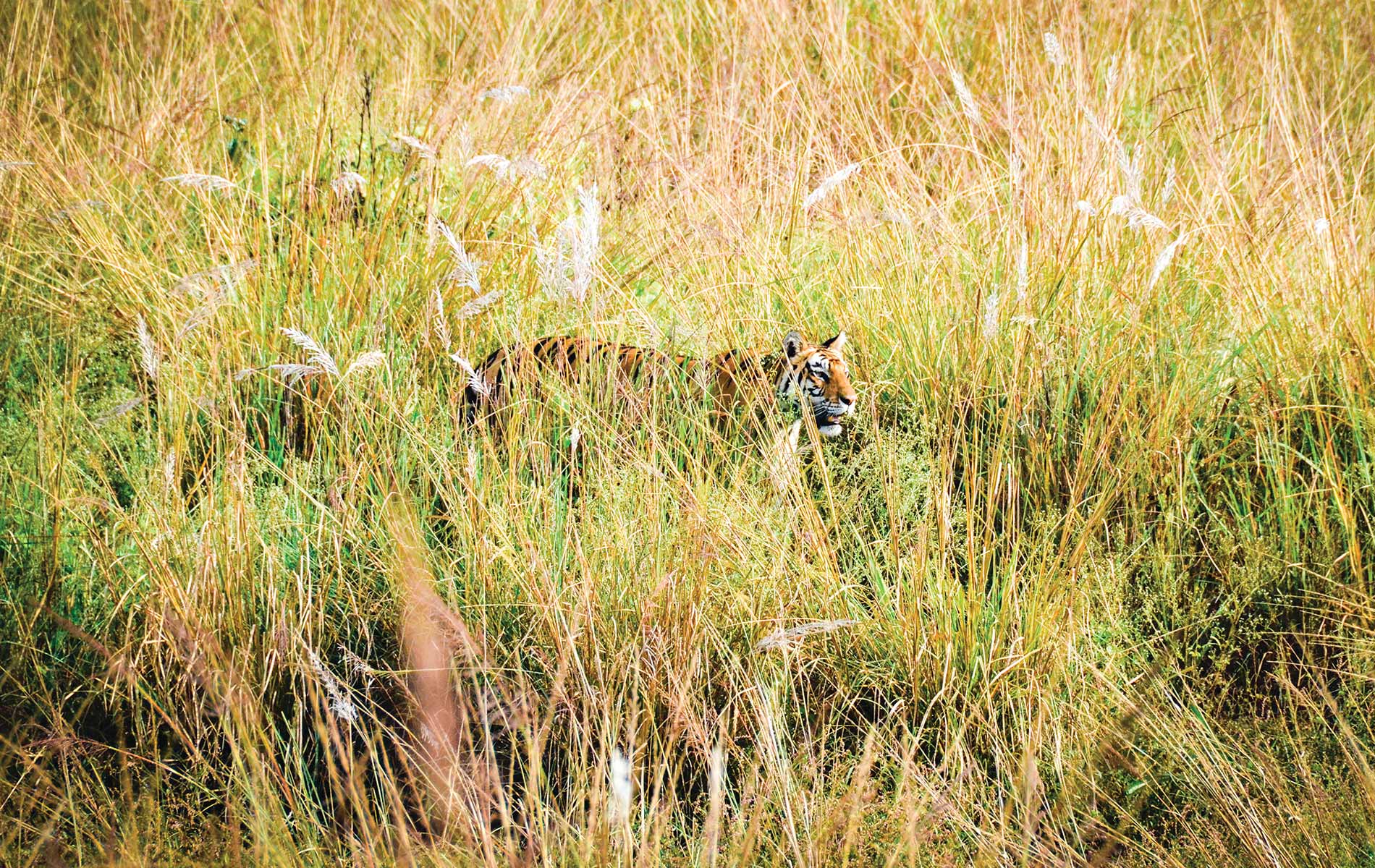
vie-magazine-tigers-in-india-hero
The tiger’s stripes provide excellent camouflage in tall grass—making it particularly elusive to photographers visiting the tiger reserves in Madhya Pradesh, India.
Chasing Tigers
On Safari in India
Story and photography by Kevin Revolinski
The driver and the guide each lean out over their jeep doors to scrutinize the dirt road for tracks. “Going this way,” the driver says, pointing, and we continue down a winding lane through teak forest and Indian ghost trees, peeling and paling through colors as they slowly turn white this time of year. We’ve been bumping around for days, kicking up clouds of dust in an open safari jeep. We ride in back, covered with blankets and hot-water bottles from the lodge on cold mornings. The sun is intense in the afternoon, the dry season offering no cloud protection. No one minds or complains; we are caught up in the hunt. We’ve invested time and money to come to Madhya Pradesh, a state in the central highlands of India, to see a rare creature: the mighty tiger.
This isn’t the instant gratification of a game drive in the Serengeti, where there are wide-open grasslands, herds of elephants, zebras, giraffes, and wildebeests, and the likely chance of seeing lions. This is a slow burn. Detective work. A patient hunt. This shouldn’t be surprising; the tiger population in the world has long been declining from somewhere around 100,000 in the early twentieth century to today’s numbers of less than 3,900 in the world. The biggest of the big cats, the tiger, is extinct in several of its native lands and declining in number elsewhere—except in India. Although only 11 percent of its territory remains, India reported a 30 percent increase in its tiger numbers in 2015. The six designated tiger reserves in Madhya Pradesh are the best bets for spotting one.
It’s been four days, and all we get are clues. A paw print. Scratch marks on a tree. A roar off in the distance. The driver stops for a mahout who leans forward on his elephant mount, pointing back along the jungle path from where he came. “He says he saw one this morning,” the driver relays. Over the whine of the jeep’s motor and the rattle and creak of its frame as it traverses the rough road, our driver can hear something in the distance. “There,” he says. “Warning cries.” These are the danger calls of the langurs, black-faced monkeys with tails longer than their bodies. They are the watchmen of the forest: they get vocal when danger passes beneath the safety of their treetops. Then there’s the bleat of a sambar, a large type of deer. The smaller spotted deer are spooked, ears turning like parabolic antennas, heads up from the grasses they have stopped chewing. We wait, but still, there’s nothing.
It is remarkable that tigers can still be found in the wild, let alone that India has reversed their decline. Poaching is no longer a tiger’s biggest threat; now it’s other tigers. Tigers are fiercely territorial and, depending on availability of prey, that territory tends to be rather expansive. Fights among males can be deadly. The dominant male mates with females in the area, and afterward, the females have the challenge of defending their cubs from other males (competing males kill cubs to make a female able to breed again). A male cub needs to survive at least two years before it might hold its own or challenge an older male for territory. A shift in power means more threats to the most recent litters. To minimize this concern, the tigers need more land. With six reserves in Madhya Pradesh already, that is a challenge.
- A mahout rides an elephant through the national park.
- Two langurs relax on a log. Their warning cries from the treetops are often a good sign that a tiger is nearby.
The jeep slows, and the driver and guide lean out over a fresh print. The tigers like to follow the roads. A couple of park workers inform our guides that they caught sight of a tiger moving east. Another mahout on an elephant appears from a forest trail and points back. “He saw a kill and a mother with two cubs feeding on it,” our guide says. It’s after 9:00 a.m. already, and our odds of spotting a tiger diminish as they become less active from now until the evening. And so it goes.
We’ve already been to Satpura National Park, where we also had the chance to view wildlife from a canoe, and Pench National Park, where we took a mountain-bike tour along a road with tiger and sloth bear tracks. Satpura required a boat ride to get to the jeeps at the gate, while Pench featured an impressive ridge in the distance rising from the teak forest. The bird-watching has been excellent, and we’ve seen plenty of monkeys, jackals, wild boars, and various herd animals. One jeep in our group even came upon a leopard. But no tigers. The next day, we move to a new lodge and a different park.
It’s day five, and we are starting to consider the possibility that on an eight-day tour, we might come up empty. But our odds increase as we head to Kanha and Bandhavgarh National Parks.
- The big moment arrives; an adult tiger is finally spotted alongside the road in Kanha National Park.
- Safari guests and their guides enjoy a picnic in the forest before continuing their trek.
In Kanha, the evening is settling in around us as we stop to photograph a rare owl in the branches right above us. We continue down the road, and a tall hill shrouded in jungle rises to our right. We come to a narrow, grassy clearing that rises up the hill like a ski run. The driver hits the brakes. “There!” he cries. A hundred meters up, a light patch in the grass turns, and a pattern of black bars slips off into the trees.
All decorum is lost, and we are like children clambering over our seats for a better view, but the driver commands us to sit. He reverses the jeep back to where the owl was, and we wait. Nothing. After fifteen minutes, we roll forward to the clearing again. “He will come down,” the guide says with confidence. Fifteen minutes later, he is vindicated. “There!” We point at a hint of movement back where we just were, and again he drives backward to reach it. We’ve found our tiger.
He takes a few steps through the grass and brush, his muscles quivering beneath his orange-and-black fur. We are not twenty feet away—in an open jeep. The hairs on my arms stand up.
Standing parallel to the road, the beast seems almost bored as he sizes us up. He takes a few steps through the grass and brush, his muscles quivering beneath his orange-and-black fur. We are not twenty feet away—in an open jeep. The hairs on my arms stand up. We can look right into the tiger’s eyes, see its whiskers and the white dots on the backs of its ears. There is no glass partition, no bars; just a tiger, burning bright, free in the forests of the night. Was it worth the wait? The long drives over bumpy roads, the hours traveled to reach the parks? Would it be so exhilarating if we could easily see tigers at every turn? The tiger turns back toward the trees, casts one last look over its shoulder at us, and leaves us with our hearts thumping.
Yes, it was all worth it. You have to earn it. You have to have patience. And a little luck doesn’t hurt either.
— V —
Kevin Revolinski is the author of several books, including The Yogurt Man Cometh: Tales of an American Teacher in Turkey. He also writes online at TheMadTraveler.com.
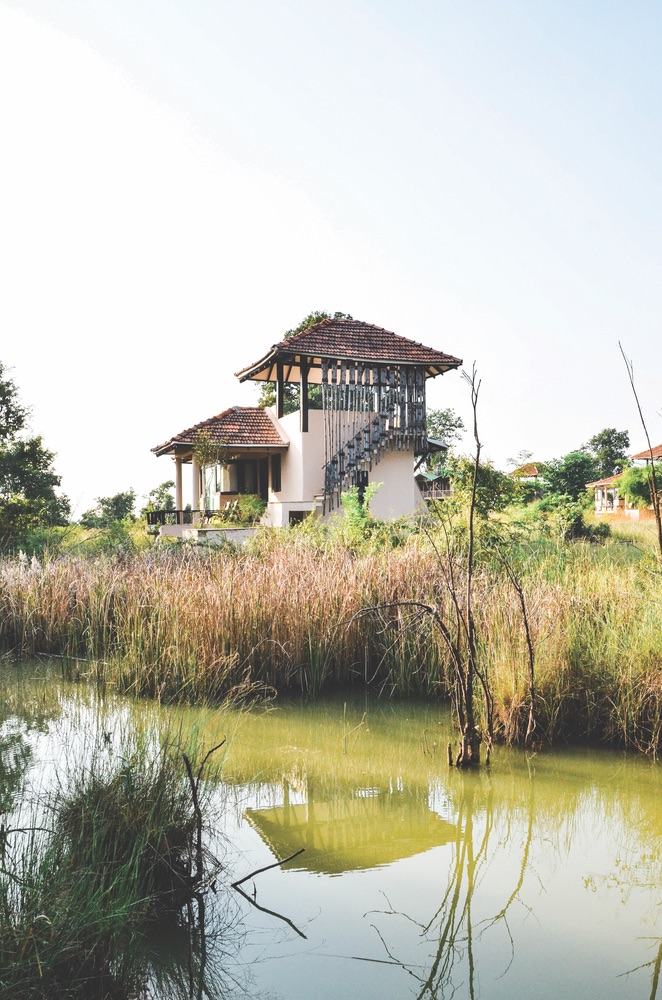
A scenic guesthouse at Denwa Backwater Escape in Satpura National Park
If You Go:
Royal Expeditions coordinated all our travel and safaris, and Pugdundee Safaris provided lodging. From Delhi, I traveled by train to Agra to experience the Taj Mahal, then to Bhopal, the capital of Madhya Pradesh. There, Royal Expeditions arranged drivers in a circle tour to four national parks, with stops at two UNESCO World Heritage Sites: the Paleolithic paintings at the Bhimbetka rock shelters and the erotic-themed sculptures and temple complex at Khajuraho. The chances of seeing tigers in the four national parks break down as follows: Satpura, 20 percent; Pench, 40 percent; Kanha, 70 percent; and Bandhavgarh, 90 percent. By the end, I’d seen several tigers and all other manner of wildlife. A typical traveler would likely want two to three days and two daily game drives at each park.
Where I Stayed:
Denwa Backwater Escape, Satpura National Park
Pench Tree Lodge, Pench National Park
Kanha Earth Lodge, Kanha National Park
>Kings Lodge, Bandhavgarh National Park
Share This Story!
KEEP UP WITH THE LATEST STORIES FROM VIE



